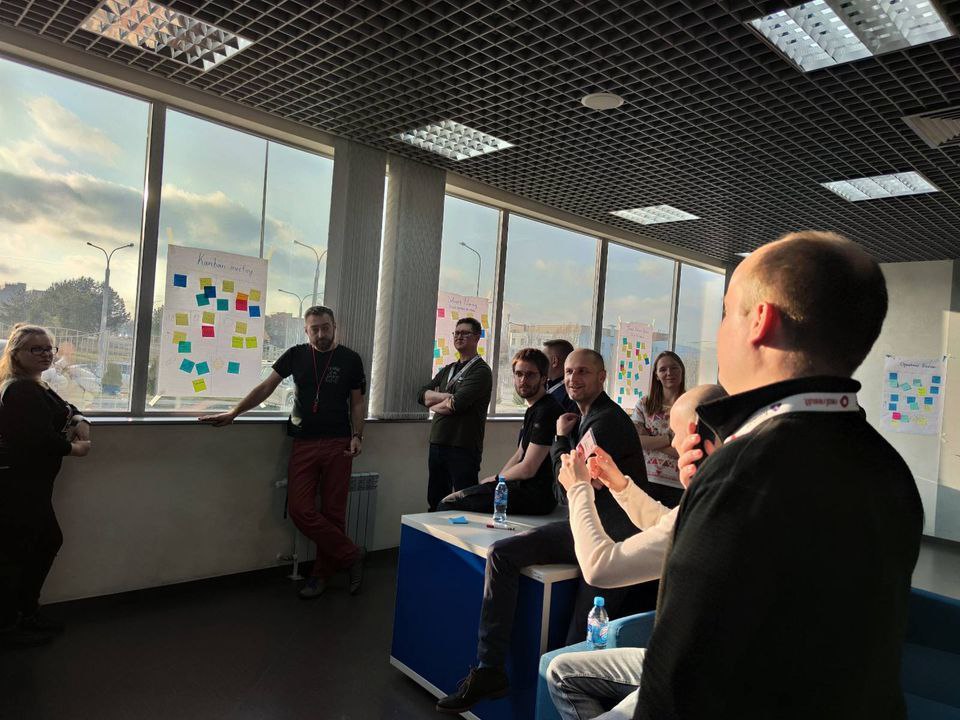Get Buy-In for Digital Transformation

Author: Andrew Dvirnyk
Digital transformation is a hot topic inside and outside of the IT industry. However, just because digital transformation is often on people’s minds does not mean that it is automatically an “easy sell” to internal teams.
In fact, getting buy-in for digital transformation from individuals within your organization can be a challenge. Not only that, it can be a challenge so significant that it threatens to cost your organization some of its most valuable assets: time and money.
So, you might be asking, what can I do to garner support for digital transformation from key players in my organization? What compels stakeholders to make the right choices for digital transformation? And what do these individuals need to know to help put my organization on the right path to successful digital transformation?
That is some of what we are diving into here, along with tips for how to get the buy-in you need to engage in the digital transformation projects that you determine are best for every level of your organization.
Understand Digital Transformation
The first step in the process might not be the most obvious to those of us who are leaders in the digital transformation space. But remember to take the time to explain to stakeholders exactly what digital transformation is, how it impacts your organization, and what opportunities it creates.
Just as importantly, make it a priority to communicate to the key players in your organization what failing to embrace digital transformation can mean for the health and longevity of your organization.
What is Digital Transformation?
One of the challenges to digital transformation buy-in is the fact that, by definition, digital transformation encompasses a significant shift in the way organizations do business. It also requires a shift in the way employees carry out their daily tasks, as well as the very tasks that those employees are required to perform.
The exciting part about digital transformation, of course, is that it utilizes innovative technologies to create new ways of doing business that are more automated, efficient, and error-proof. Digital transformation touches every facet of an organization, from internal operations, to customer experience, to the organizational culture itself.
And while this creates tremendous opportunities for innovation and improvements, it also often makes it difficult to get buy-in because, frankly, change is hard. And many within your organization are likely to be resistant to it. Understanding the roots of this resistance and coming up with ways to communicate the value of digital transformation by empowering rather than alienating employees and other stakeholders is key to getting the buy-in you need, and, ultimately, to the successful adoption of digital transformation.
Articulate the Value of an End-to-End Solution
If you want to get buy-in for digital transformation (and you should!), start by taking a holistic approach to the value it provides your organization. What we are talking about here is an end-to-end solution.
This means that you are presenting your stakeholders with an opportunity to resolve multiple issues and achieve multiple goals through one simple, focused approach. With digital transformation, you are offering reduced cycle times, improved efficiencies, fewer errors, lower cost over time, and additional high value results. And for as much value as digital transformation adds, it does so with simplicity. In many ways, this is the beauty of innovations of this type. It makes the complicated easy. It solves problems and improves processes at every stage.
Understood in this way, buy-in becomes much less of a challenge. This is because it becomes clear that, with the technologies you are proposing, you are offering value at every level. And you are reducing complexities at the same time.
Use Workshops to Educate about Digital Transformation
One of the most effective ways to get buy-in for digital transformation is to educate employees and stakeholders at all levels about the value that digital transformation gives your organization.
Remember that part of the education process involves understanding the perspectives that members of your organization are bringing to the digital transformation conversation. Instead of trying to convince them in a vacuum, meet their fears, concerns, and perspectives head on. Take the next step and demonstrate, with empathy, the value of digital transformation within your organization.

Begin by focusing on the power, value, and opportunity that these innovations present. Alleviate fears about robots replacing humans. Hone in on all of the ways in which robotic technology and automation improve employee experience and the overall operations of your organization.
At the same time, use these innovation workshops, built to excite your audience about the idea of digital transformation, to address fears about rapidly changing technology. Automation can be a daunting topic, not because the technology behind it is so difficult to understand, but because the reality is, automation is changing the way we all work. And it is doing so at a rate of speed that many are not yet ready to embrace.
Educating through workshops and other initiatives, as well as creating open dialogues, helps to ready employees and stakeholders for change. That readiness allows for buy-in initially and throughout the transformation process.
Account for Reactions to Change
Knowing that digital transformation ultimately improves day-to-day employee experiences and the overall efficiency of the organization does not automatically mean that the transition will be smooth.
It would be a mistake to underestimate how difficult it is for individuals (even those who work in technology-driven jobs) to accept change. As you navigate the digital transformation process and as you work to get buy-in for digital transformation within your organization, take into account the legitimate fears that come about as a result of the changes you are presenting.
Individuals will feel like they are giving up their power in the face of automation technologies. It is your responsibility to show how automation empowers employees. They will be concerned about how automation and other technologies will change the ways they work. Show how these technologies improve their day-to-day experiences.
Introduce new tools and technologies in the context of education and value. Explain how changes will work, what the processes will look like, and how individuals benefit at each stage. Highlight the ways in which employee expertise will stand out, rather than be replaced.
Humanize the Workforce
As you lead these conversations, keep in mind that there is a way to look at this seemingly radical technology transformation that is both positive and productive. Yes, automation does replace some human tasks. What automation also does is enable individuals to build and to use new skills.

This is a particularly important point for us at IBA Group. One of our primary goals as an organization that his truly SMART (Sustainable, Multi-Faceted, Automated, Reliable, and Trusted), is to humanize the workforce. You may ask, “How does IBA Group aim to humanize the workforce if they are automation experts?” and this is an excellent question.
We believe that humanizing the workforce happens when automation enables us to eliminate the repetitive and boring work that talented people are forced to spend too much of their time doing in the absence of automation. We commit to using automation technologies to help our customers focus on work that adds value for their customers, and for their employees.
Provide a Path for Onboarding
No project, not even the smallest one, can be completed successfully without a clear path for onboarding. Now, since digital transformation of an organization is certainly not a small project, the need for a strong, mutually agreed upon onboarding path is even greater.
When it comes to getting organizational buy-in for digital transformation, the onboarding path needs to include some key elements. Start by acknowledging that the path to change is a challenging one. Then, identify what operations will be changed when the robots are added to the organization. Next, explain all the ways in which those operations will change as a result of introducing the robots into the organization.
Knowing the what and the how enables your organization to move forward on a clearly defined path. This enables you to set appropriate expectations and create processes to achieve goals. Keep in mind, though, that as with any solution, the introduction of RPA technology and other digital solutions associated with digital transformation, does not automatically resolve all issues. Nor does it mitigate all risks. In our next article, we dive into some of the risks and limitations associated with digital transformation, and how transparency related to those risks and limitations can actually help to motivate your organization around digital transformation.
Questions about Automation and Digital Transformation
Even if your organization is ready to embrace digital transformation, you are likely to have many questions about RPA, automation solutions, and other innovations that can improve the way you work. Our engineers have decades of experience working with emerging and established technologies to improve efficiencies, reduce costs, and increase productivity across organizations and industries.
Reach out to us to take your next step on the digital transformation journey.